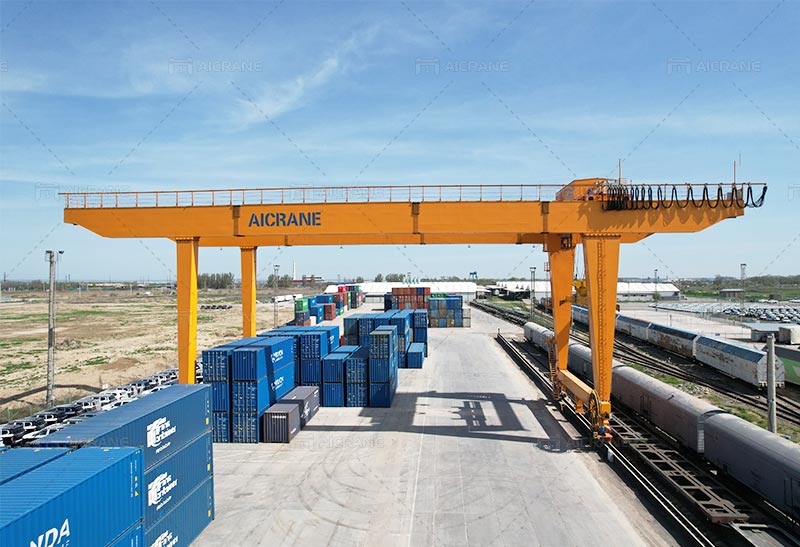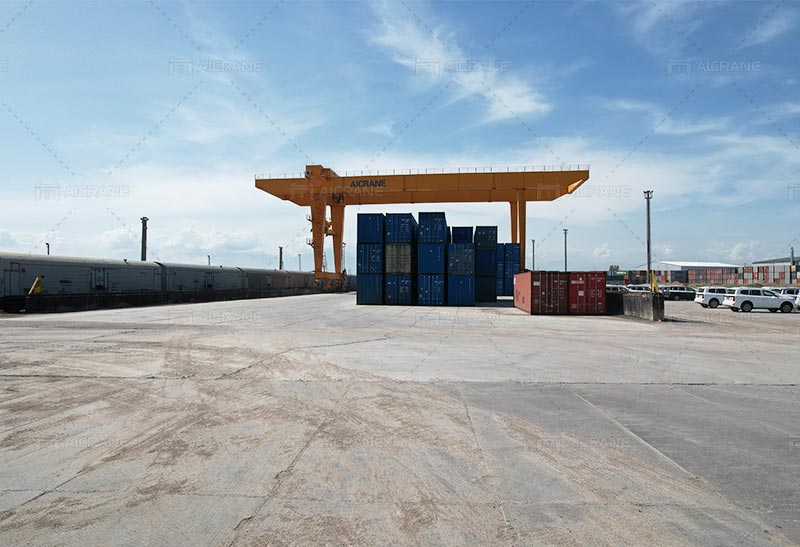Rail-Mounted Gantry (RMG) cranes are essential for efficient container handling and heavy-duty lifting operations in ports, warehouses, and industrial facilities. Proper assembly and disassembly of these cranes are critical to ensuring their operational efficiency, safety, and longevity. This article explores best practices for the assembly and disassembly of RMG cranes, providing a comprehensive guide to achieving successful outcomes.

1. Pre-Assembly Planning
1.1 Detailed Planning and Scheduling
Before starting the assembly process, it is crucial to develop a detailed plan and schedule. This plan should include:
- Site Preparation: Ensure that the site is fully prepared with adequate space and infrastructure for rail mounted gantry crane assembly. This includes checking the rail alignment, ground stability, and availability of necessary utilities.
- Personnel and Equipment: Assign skilled personnel with experience in crane assembly and ensure that all required equipment, such as cranes, hoists, and tools, are available and in good working condition.
- Documentation: Gather and review all relevant documentation, including assembly instructions, engineering drawings, and safety guidelines. This documentation will guide the assembly process and help in troubleshooting any issues that may arise.
1.2 Safety Considerations
Safety is paramount during assembly and disassembly. Key safety measures include:
- Risk Assessment: Conduct a thorough risk assessment to identify potential hazards and implement appropriate safety measures.
- Personal Protective Equipment (PPE): Ensure that all personnel wear appropriate PPE, including hard hats, gloves, safety glasses, and harnesses.
- Emergency Procedures: Establish clear emergency procedures and ensure that all personnel are trained to respond to emergencies effectively.

2. Assembly Process
2.1 Foundation and Rail Installation
- Foundation Verification: Verify that the foundation is level and meets the structural requirements for supporting the container handling crane. The foundation must be robust enough to handle the crane’s weight and operational stresses.
- Rail Installation: Install the rails accurately, ensuring that they are level and properly aligned. Use precision tools to measure and adjust the alignment as necessary. Secure the rails with appropriate fasteners and ensure they are anchored firmly.
2.2 Crane Components Assembly
- Component Inspection: Inspect all crane components before assembly to ensure they are free from defects and meet the required specifications.
- Assembly Sequence: Follow the assembly sequence as outlined in the engineering drawings. Typically, this includes assembling the crane’s main girders, end carriages, and hoisting mechanisms.
- Alignment and Adjustment: As each component is assembled, check and adjust the alignment to ensure that the crane operates smoothly. Use alignment tools and measurement devices to ensure precision.
2.3 Electrical and Control Systems
- Electrical Wiring: Carefully install the electrical wiring and control systems according to the provided schematics. Ensure that all connections are secure and correctly insulated.
- Control System Calibration: Calibrate the control systems to ensure accurate operation. Test all control functions to verify their proper operation.
- Safety Systems: Install and test safety systems, including limit switches, emergency stop buttons, and anti-sway mechanisms.
3. Testing and Commissioning
3.1 Load Testing
- Initial Testing: Perform initial testing of the gantry crane system with a light load to ensure that all systems function correctly. Gradually increase the load to the crane’s maximum capacity, monitoring for any issues.
- Load Testing Protocols: Follow established load testing protocols to ensure that the crane meets safety and performance standards. Document the results of the load tests.
3.2 Operational Testing
- Functional Testing: Test all operational functions of the crane, including lifting, lowering, and horizontal movement. Verify that the crane operates smoothly and responds accurately to control inputs.
- Safety Systems Testing: Test all safety systems, including emergency stops, limit switches, and alarms. Ensure that they function correctly and provide adequate protection.
4. Disassembly Process
4.1 Preparation for Disassembly
- Site Assessment: Assess the site to ensure that it is prepared for disassembly. This includes verifying that there is adequate space for removing crane components and transporting them.
- Component Removal: Follow the reverse sequence of assembly for disassembling the Aicrane crane. Carefully remove each component, taking care to avoid damage.
4.2 Safety and Handling
- Safety Measures: Implement safety measures during disassembly to prevent accidents and injuries. Ensure that all personnel are aware of the risks and follow safety procedures.
- Handling Equipment: Use appropriate handling equipment, such as cranes and hoists, to remove and transport crane components. Ensure that all lifting and handling operations are conducted safely.
4.3 Documentation and Inspection
- Component Inspection: Inspect all disassembled components for signs of wear or damage. Document the condition of each component for future reference.
- Documentation: Maintain detailed records of the disassembly process, including any issues encountered and the condition of the components. This documentation will be useful for reassembly or future maintenance.
5. Post-Assembly and Disassembly Considerations
5.1 Maintenance and Inspection
- Routine Maintenance: Implement a routine maintenance program to keep the crane in optimal condition. Regular inspections and servicing will help identify and address any issues before they affect crane performance.
- Inspection Records: Keep detailed records of all maintenance and inspections. This documentation will help in tracking the crane’s performance and planning future maintenance.
5.2 Training and Documentation
- Operator Training: Provide training for crane operators and maintenance personnel to ensure they are familiar with the crane’s operation and safety procedures.
- Documentation: Maintain comprehensive documentation of the assembly, disassembly, and maintenance processes. This will serve as a reference for future work and help in ensuring compliance with safety standards.
Conclusion
Proper assembly and disassembly of rail-mounted gantry cranes are essential for ensuring their safe and efficient operation. By following best practices in planning, assembly, testing, disassembly, and maintenance, you can achieve optimal performance and longevity for your RMG cranes. Adhering to safety protocols, utilizing skilled personnel, and maintaining detailed documentation will contribute to the success of your crane operations and safeguard the well-being of all involved.